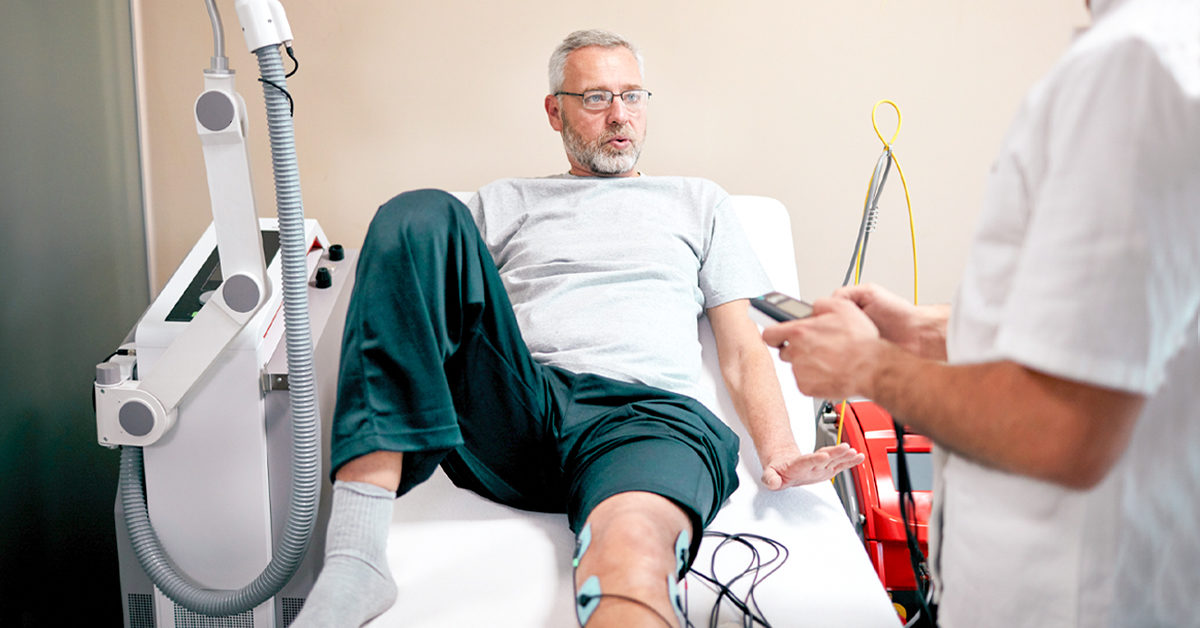When an arthroplasty surgeon treats patients with arthritis or other joint problems, they typically use one of several different treatment therapies that can help improve their symptoms and decrease the amount of pain they feel daily. Since each of these treatments offers unique benefits and involve varying degrees of risk, it’s essential to talk to your arthroplasty surgeon about what might be best for your condition. Here are the various treatment therapies that arthroplasty surgeons use.
-
Minimally Invasive, Non-operative Procedures
While you can’t choose your injury, you can discuss the best treatment for a particular issue with an arthroplasty surgeon to ensure you get the best treatment for your condition. These procedures are minimally invasive and non-operative, meaning that surgeons don’t have to open up a patient’s knee joint. Non-operative techniques use an arthroscope—a long tube with a camera at one end—to fix problems.
The operations include PRP injection (platelet-rich plasma), Synvisc injections, and prolotherapy. Commonly prescribed medications also fall into this category as a non-operative procedure. These drugs can be oral tablets or topical applications for localized pain issues such as arthritic joints or tendonitis areas like your elbow or heel.
-
Postoperative Rehabilitation
In most cases, a postoperative rehabilitation protocol is ideal for patients who require an arthroplasty procedure. Postoperative rehabilitation may include hot/cold therapy, passive range of motion exercises, and other treatments that help reduce pain and improve your functionality. If there are no severe complications, you should be able to go home within three or four days after your surgery. Once at home, it’s essential to follow your surgeon’s postoperative care plan as closely as possible.
-
Enhanced Recovery After Surgery (ERAS)
ERAS is a series of guidelines that focus on non-operative treatments after surgery, such as medication and physical therapy. One of its key goals is to decrease post-surgery pain by treating patients during surgery or giving them medications after they wake up. ERAS also focuses on pre-rehabilitation or preparing patients for their procedure with exercises or medicine beforehand. Finally, it emphasizes an early discharge from hospitalization and preventing complications to h get people back into their routine sooner.
-
Manipulation of Soft Tissues
One of the most common treatment therapies used by arthroplasty surgeons to promote soft tissue healing is manipulation. Soft tissue manipulation can be beneficial in cases where scarring or adhesions prevent full knee extension, such as with a frozen shoulder. During treatments, you will work closely with your physical therapist, who will stretch and manipulate your tissues around your joint to break up scar tissue.
Your orthopedic doctor may apply heat or ice on affected areas for maximum relief. These techniques can help give you back control over your movement. Your physical therapist may use manual methods like;
Your arthroplasty surgeon may also teach you how to perform any exercises at home.
-
Hydrotherapy
Hydrotherapy involves using water to help improve a patient’s range of motion. Hydrotherapy is a treatment option that most people find enjoyable and provides physical and mental benefits. The technique may involve floating in warm water or swimming laps in a hydrotherapy pool.
Hot/cold therapy: This type of therapy uses ice or heat packs to increase blood flow and promote healing. What could be better after surgery than an ice pack on your knee – especially if you went with one of the best arthroplasty surgeons like Dr. Miers Johnson? Just remember that cold packs need time to defrost before use; don’t try sticking them in your freezer right before bed! However, you can place hot packs over muscles just before activity.
-
Electrical Therapy
In electrical therapy, a device delivers an intense pulse of energy that forces a small part of your damaged tissue to break apart. The breaking apart of the tissue causes bleeding and scarring within your joint, both of which stimulate regrowth. It’s not a standard treatment for degenerative diseases like osteoarthritis, but it is one that arthroplasty surgeons can use if conservative measures fail to offer relief from severe pain. Shock wave therapy can bring moderate relief in early-stage arthritis cases; however, your arthroplasty surgeon will weigh whether its potential complications may outweigh its benefits.
-
Platelet Rich Plasma Therapy (PRP)
If a bone repair has failed, arthroplasty surgeons may inject platelet-rich plasma (PRP) into that area. PRP consists of a patient’s blood; it’s centrifuged to remove red and white blood cells, then mixed with an anti-inflammatory agent before being injected back into damaged areas. Platelets help speed up healing and stimulate new growth of tissue.
Surgeons can use PRP therapy in combination with surgery or instead of surgery as an alternative way to manage pain. While there are very few studies on PRP in orthopedics, those available suggest a possible benefit for its use for postoperative pain management. However, your orthopedic doctor will weigh its effectiveness depending on your condition.
Conclusion
With several different treatment therapies available, it’s crucial to choose your arthroplasty surgeon wisely and consult their thoughts on the best fit treatment for your condition. For more information about arthroplasty surgery or a consultation with a qualified orthopedic surgeon, you can contact Dr. Meirs Johnson and benefit from their vast experience in arthroplasty surgery and orthopedic arthroscopy.
